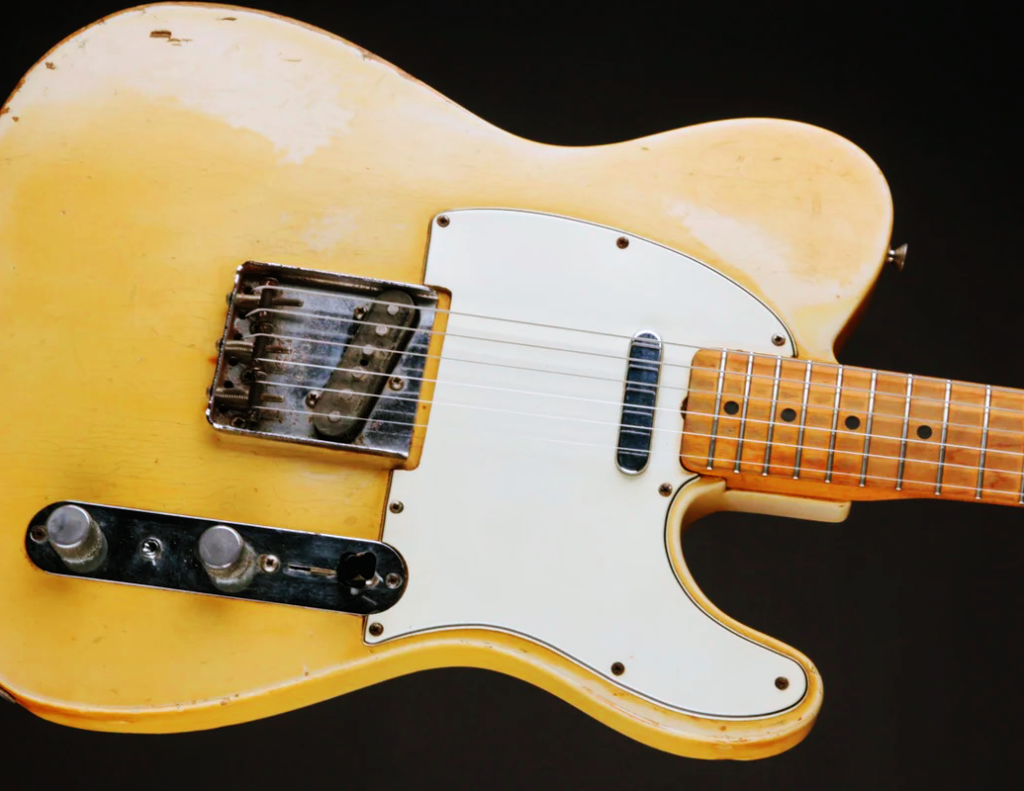The History of the Fender Telecaster
The Fender Telecaster, an iconic instrument in the realm of electric guitars, has played a pivotal role in shaping the sound of modern music. Renowned for its simple yet effective design, the Tele has become synonymous with rock, country, blues, and a myriad of other genres. Its journey from conception to its revered status today is a tale of innovation, adaptation, and timeless appeal.
Early Beginnings
The story of the Telecaster begins in the late 1940s with Leo Fender, a radio repairman turned visionary inventor. Fender’s keen interest in electronics and his desire to improve existing musical instruments led him to create the first commercially successful solid-body electric guitar. Before the Tele, most electric guitars were hollow-body or semi-hollow, which often resulted in feedback issues at higher volumes.
Leo Fender’s initial prototype, known as the “Esquire,” was introduced in 1950. This single-pickup guitar was revolutionary in its simplicity and build. It featured a solid ash body, a bolt-on maple neck, and a single-coil pickup. However, the Esquire faced some criticism for its lack of versatility. To address this, Fender quickly developed a dual-pickup version called the “Broadcaster.”
The Birth of the Telecaster
In 1951, the Gretsch company, which produced a line of drums named “Broadkaster,” raised a trademark complaint against Fender’s Broadcaster. In response, Fender dropped the Broadcaster name and shipped guitars without any model name on the headstock, leading to the “Nocaster” era. Later that year, the guitar was officially renamed the “Telecaster,” a nod to the burgeoning television industry and its futuristic connotations.
The Telecaster’s design was a marvel of practicality and function. Its solid body reduced feedback issues, and the bolt-on neck allowed for easy repairs and modifications. The dual single-coil pickups provided a bright, cutting tone that distinguished it from other guitars of the time. This unique sound and durable build quickly garnered attention from musicians.
Rise to Prominence
The Tele’s popularity surged in the 1950s as it became the guitar of choice for many influential artists. Country musicians, in particular, were drawn to its twangy tone, which suited the genre perfectly. Pioneering players like Buck Owens and Don Rich of the Buckaroos showcased the Telecaster’s capabilities, cementing its place in country music.
As rock and roll emerged, the Telecaster found a new audience. Legendary guitarist and innovator James Burton used a Telecaster to craft his distinctive playing style, influencing countless rock and roll musicians. Its simple design and reliable performance made it a staple on stages and in studios worldwide.
Evolution and Variations
Over the decades, the Telecaster has undergone numerous modifications and iterations, each catering to the evolving needs of musicians. In the 1960s, Fender introduced the “Telecaster Custom,” featuring a bound body and a rosewood fingerboard, offering a more sophisticated aesthetic. The “Telecaster Thinline,” with its semi-hollow body, provided a lighter option with a distinct tonal character.
The 1970s saw the introduction of the “Telecaster Deluxe,” equipped with humbucking pickups designed by Seth Lover, the inventor of the Gibson PAF humbuckers. This model offered a thicker, warmer sound, appealing to players who sought more versatility in their tone.
Despite these variations, the core design of the Telecaster remained largely unchanged, a testament to Leo Fender’s original vision. The guitar’s straightforward construction and distinctive sound continued to resonate with musicians across genres and generations.
The Telecaster Today
Today, the Fender Tele remains as popular as ever, embraced by both vintage enthusiasts and contemporary artists. Its influence can be heard across a wide spectrum of music, from the gritty blues of Muddy Waters to the experimental rock of Radiohead’s Jonny Greenwood. Modern players appreciate the Tele’s ability to blend seamlessly into diverse musical contexts while maintaining its unique identity.
Fender has continued to innovate with the Tele, offering a range of models that cater to different playing styles and preferences. From the classic “American Professional” series to the more accessible “Player” series, there is a Telecaster for every level of musician. Custom shop models and artist signature editions also ensure that the legacy of the Telecaster continues to evolve.
Conclusion
The Fender Telecaster stands as a symbol of innovation and enduring appeal in the world of electric guitars. Its journey from Leo Fender’s workshop to stages and studios around the globe highlights its remarkable adaptability and influence. With a history spanning over seven decades, the Tele has not only shaped the sound of countless musical genres but also inspired generations of musicians to push the boundaries of creativity. Its legacy is a testament to the power of simplicity and the timeless allure of a truly great instrument.
If you’d like to learn more please contact Los Feliz Guitar Lessons for your free trial lesson!

